Are you suffering from teeth grinding and its side effects? Read about this surprising solution: Botox for teeth grinding.
Teeth grinding, or bruxism, is a common dental issue affecting millions of people worldwide. This involuntary clenching and grinding of the teeth, often occurring during sleep, can lead to a range of problems such as worn enamel, jaw pain, headaches, and even disrupted sleep patterns.
While traditional treatments like mouthguards and stress management techniques have been the go-to options, a surprising solution has emerged in recent years: Botox. In this blog post, we’ll delve into the world of Botox for teeth grinding, exploring its efficacy, safety, and the science behind this innovative approach.
Understanding Bruxism or Teeth Grinding
Before we explore the potential of Botox for bruxism, it’s crucial to understand the condition itself.
Bruxism can be classified into two types:
- Awake bruxism, which occurs during waking hours and is often associated with stress
- Sleep bruxism, which takes place during sleep and is generally unrelated to psychological factors
The latter is particularly challenging to address, as individuals may not even be aware of their grinding habits until symptoms such as jaw pain and headaches manifest.
Conventional Treatments for Bruxism
Traditionally, dentists have prescribed mouthguards or splints to alleviate the impact of bruxism. These devices act as a protective barrier, preventing the surfaces of the teeth from grinding against each other.
While effective for many individuals, these solutions are not without drawbacks. Compliance can be an issue, as some people find it uncomfortable to wear these devices consistently. Additionally, they only address the symptoms rather than the root cause of bruxism.
Botox for Bruxism
Botox, short for botulinum toxin, has long been associated with cosmetic procedures to reduce the appearance of wrinkles. However, its muscle-paralyzing properties have found applications beyond the realm of beauty. In recent years, Botox injections have gained attention as a potential treatment for bruxism, specifically the type that occurs during sleep.
The Science Behind Botox for Bruxism
The idea behind using Botox for bruxism lies in its ability to relax muscles. Bruxism is essentially a hyperactivity of the jaw muscles, causing them to contract forcefully during sleep. By strategically injecting Botox into these muscles, their activity can be dampened, reducing the intensity of teeth grinding.
The procedure involves a series of small injections into the masseter muscles—the primary muscles responsible for chewing. The effects are not immediate but gradually take hold over the course of several days. Botox temporarily interrupts the signals between nerves and muscles, providing relief from the intense muscle contractions associated with bruxism.
Efficacy of Botox for Teeth Grinding
Numerous studies have explored the efficacy of Botox in treating bruxism, with promising results. Many patients report a significant reduction in both the frequency and intensity of teeth grinding after undergoing Botox injections. The effects typically last for several months, after which the treatment can be repeated if necessary.
Advantages of Botox for Bruxism
- Non-Invasive: Unlike surgical interventions, Botox injections are non-invasive and do not require any incisions. This makes it an attractive option for individuals seeking relief from bruxism without undergoing major dental procedures.
- Targeted Treatment: Botox allows for precise targeting of the muscles involved in bruxism. This targeted approach minimizes the impact on surrounding muscles, preserving natural facial expressions and movements.
- Temporary Effects: The effects of Botox are temporary, offering individuals the opportunity to assess the treatment’s efficacy without committing to a permanent alteration. If the results are favorable, the procedure can be repeated as needed.
- Quick Recovery: Since Botox injections are minimally invasive, the recovery time is minimal. Patients can resume their normal activities shortly after the procedure.
Considerations and Potential Side Effects of Borox for Teeth Grinding
While Botox for bruxism shows promise, it’s essential to consider potential side effects and limitations. Some individuals may experience temporary weakness in the jaw or difficulty chewing immediately after the procedure. Additionally, as with any medical intervention, there is a risk of allergic reactions or other adverse effects, though these are relatively rare.
It’s crucial for individuals considering Botox for bruxism to consult with a qualified healthcare professional. A thorough examination and discussion of medical history can help determine whether this treatment is a suitable option.
Botox for Teeth Grinding at Lelara Clinic
At Lelara Aesthetic Clinic, we understand the profound impact that teeth grinding can have on your daily life, and we are pleased to offer Botox as a progressive solution to address this concern.
Our team of experienced and qualified healthcare professionals specializes in providing Botox treatments for bruxism, tailoring each procedure to meet the unique needs of our patients. With a commitment to personalized care, we guide individuals through the process, from the initial consultation to the post-treatment follow-up, ensuring a comprehensive and comfortable experience.
If you’re seeking relief from the challenges of teeth grinding and are considering Botox as a potential solution, we invite you to schedule a consultation at Lelara. Let us help you regain control over your oral health and well-being with our expertly administered Botox treatments designed to mitigate the effects of bruxism.
Click on this link to view the updated prices for Botox for teeth grinding at Lelara Clinic.



